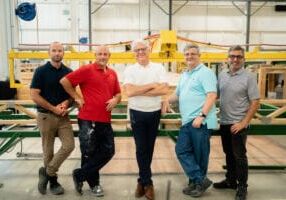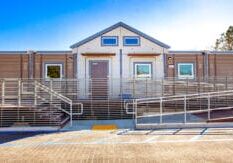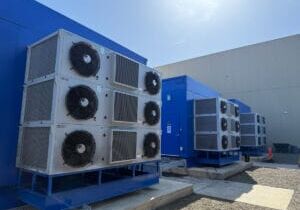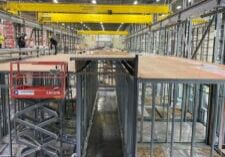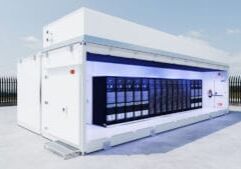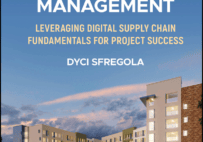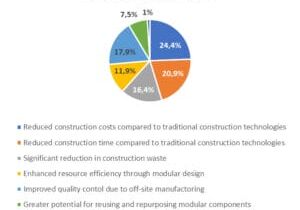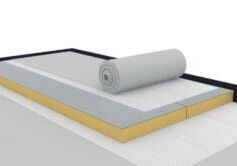How Air Caster Technology Has Helped Improve Modular Building Manufacturing

John Massenburg is the President and CEO of AeroGo, Inc.
By manufacturing houses and doing it repetitively, Fading West, a Colorado-based firm, has kept costs down and produced houses more quickly. To accomplish this goal, the company designed a manufacturing facility that can turn around hundreds of modular units, using a breakthrough process that utilizes the adoption of air casters, a low-profile material handling system inspired by hovercraft technology. Traditional systems, like cranes and forklifts, lack the capacity for larger modules, while rail systems are too inflexible and immobile.

At Fading West, the company uses an unconventional U-shaped production line with nine stations down one row, one in the middle, and nine more stations up the other row. As a result, Fading West doubled its throughput and minimized travel and other forms of waste with consistently positive results.
Transforming the Construction Industry
Modular housing construction firm Fading West Development is anything but fading away. Indeed, the Buena Vista, Colorado-based company, named after an album from American rock band Switchfoot, has seen its success skyrocket in housing construction since its inception. That’s due to its clever and innovative solution to a massive and growing problem: building modular homes, apartments, and other value-engineered residential products in a factory setting to address the nationwide crisis in housing affordability. “I came here to Fading West to ask how we can revolutionize the construction industry to create more affordable housing and get it into the marketplace,” says Sean Brown, Fading West’s vice president of factory operations.
Revolutionize it they did. The Colorado Sun newspaper described Fading West as “a solution to the housing crisis.” Time Magazine even recognized Fading West as one of the 100 Most Influential Companies of 2022—ranking it alongside Amazon and Pfizer.
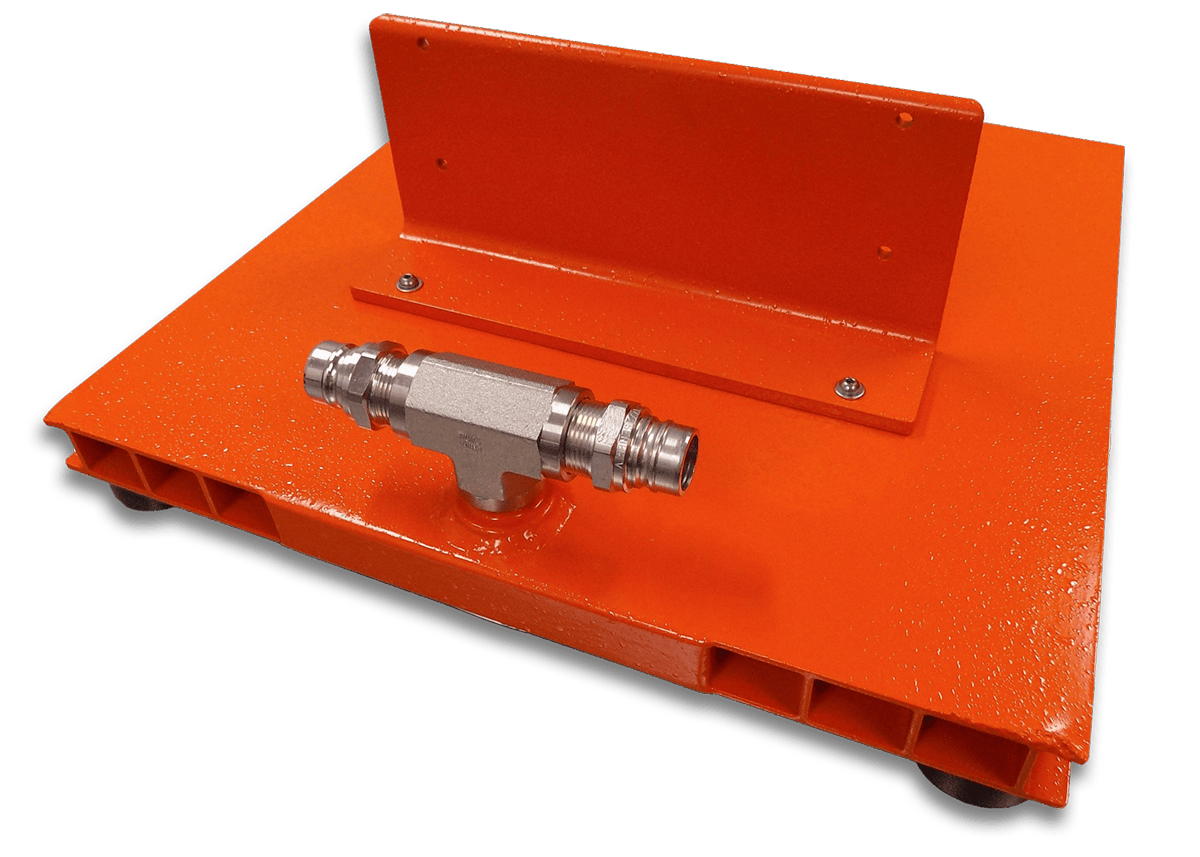
Typical load module for the modular industry allows for quick bolting to the structure through the pre-drilled holes.
What accounts for its stellar success? Efficiency. “By manufacturing houses and doing it in a repetitive fashion, we can keep costs down and we can get the number of houses out quicker,” Eric Schaefer, vice president of sales and strategic partnerships, told the Sun. The result is the company can build a modular three-bedroom home up to five times faster than a traditional stick-built house, with construction costs 15-30 percent lower and market costs at least 25 percent less expensive than comparable stick-built homes.
But what drives that efficiency? The answer might be surprising.
Turning Housing Structures into Hovercraft
The main obstacle for Fading West was designing a manufacturing facility that could turn around hundreds of these modular units, sometimes called “boxes,” quickly and efficiently. Since the company built its 110,000-square-foot factory in Buena Vista in 2021, it had an opportunity to design the perfect manufacturing process from the ground up.
Unfortunately, traditional material handling methods proved intractable in meeting its desired goals. Either they wouldn’t work in the way Fading West wanted, or they wouldn’t work at all. For example, cranes and forklifts lacked the capacity for larger modules, while rail systems were too inflexible and immobile. Fading West didn’t want a straight-line manufacturing process because that would require too large a facility and place incoming and outgoing areas on opposite ends of the facility, necessitating two staging areas. It also would force unnecessary travel for workers to monitor the process or move equipment or resources.
The breakthrough came with the adoption of air casters, a low-profile material handling system inspired by hovercraft technology. By inflating a series of donut-shaped bags with compressed air, the massive modules can hover above the ground, allowing for easy, nearly frictionless maneuverability. “In a 38-foot-long-house, we use six air casters,” says Brown. “With 40 psi, we lift the house up and, with four people, one at every corner, we just push the house across the stages. It is not difficult to move entire houses very smoothly.”
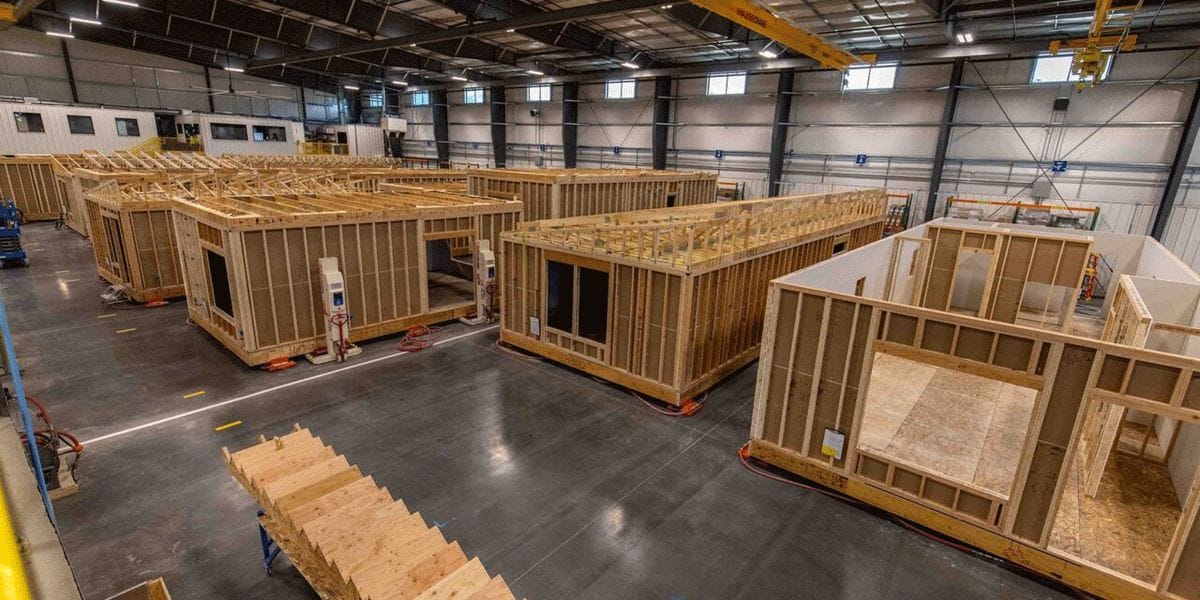
Fading West’s production line can be moved safely and efficiently while floating on air.
U-shaped? You Bet
Better yet, the air casters made it possible to create an unconventional U-shaped production line with nine stations down one row, one in the middle, and nine more stations up the other row. That way, Fading West could double throughput, minimize travel and other forms of waste, and move structures in and out through the same opening. “We can move the entire factory through all 19 stations in the line in under 30 minutes,” says Brown. It enabled Fading West to build the assembly process around a central mezzanine holding tooling and other resources, with elevated offices offering complete visibility over the whole manufacturing line, all at once.
Notably, air casters also mean flexibility, not just in terms of movement but also in terms of change. For example, one structure might be 56-feet-long and another 76-feet-long. Air casters allow the company to easily accommodate a variety of shapes and sizes of boxes and then make changes on the fly. Even better, if Fading West needs to pause production on one unit to handle one-off issues, it can simply float the box to the side and allow the remainder of the production line to continue moving uninterrupted. When ready, employees can seamlessly float the unit back into production.
Solving Real-world Problems While Floating on Air
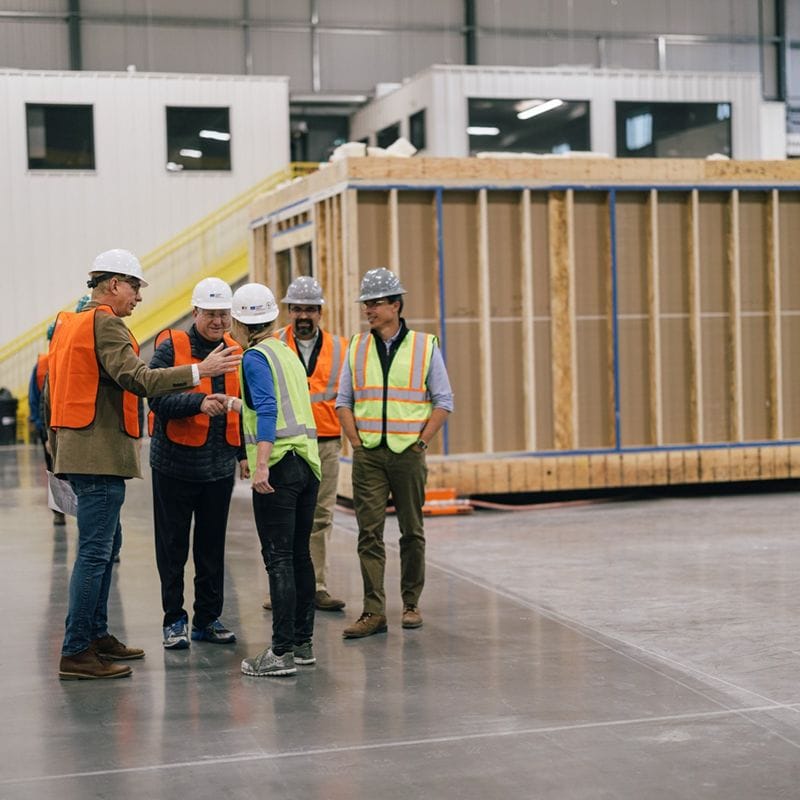
The team at Fading West discusses their efficient production line.
Tackling housing affordability is an ambitious goal, but with its ingenious manufacturing setup, Fading West has found the formula to produce high-quality housing quickly and affordably. Air casters play a quiet but critical role in this formula for success. With their ease of use, low cost, and unbeatable flexibility, Fading West designed a factory from the ground up that could maximize output and adaptability without disruption while minimizing waste. Ultimately, using air casters means Fading West can produce over 700 modular homes and apartments annually.
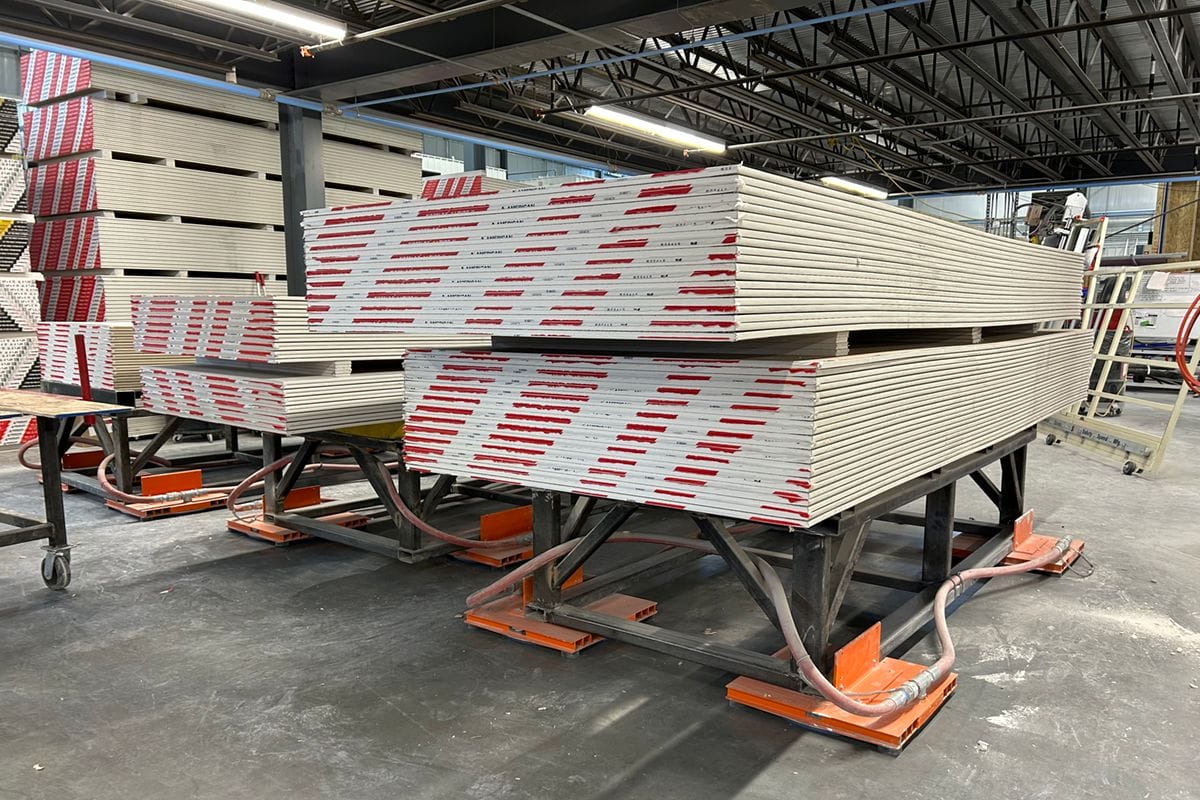
Moving building materials across the shop floor with air bearings.
It’s not just air casters themselves that matter; it’s also the company that provides them. “AeroGo was the only partner that could meet all of our needs,” says Brown. “I wish they could have provided everything in this plant. AeroGo is the only one who delivered what was promised and on time.”
AeroGo has made an impression—and not just on factory workers. “The AeroGo product is so nice, so unique, it’s commented on by every single person that walks through the factory,” says Brown. Playing a part in making housing affordable again and impressing passers-by? That’s just the everyday reality of AeroGo air casters making otherwise impossible moves happen.
Facilitating Growth with Air Caster Technology
Competition in the construction industry is fierce. Historically, two out of these three customer demands—economy, speed, and quality—were adequate. In today’s world, everyone wants all three and then some. Using modern air caster technology in the modular building sector is one way to help meet the fast-moving, high-demand expectations of the industry and its expected growth through 2024 and beyond.
More from Modular Advantage
Resia: Breaking All the Rules
Resia Manufacturing, a division of U.S.-based Resia, is now offering prefabricated bathroom and kitchen components to industry partners. Its hybrid fabrication facility produces more precise bathroom and kitchen components (modules) faster and at lower cost than traditional construction. Here’s how Resia Manufacturing does it.
How LINQ Modular Innovates to Bring Modular To The Market in the UAE and Beyond
LINQ Modular, with an office and three manufacturing facilities in Dubai, is a modular firm based in United Arab Emirates. The company is on a mission: to break open the housing and construction markets in the Gulf Cooperation Council (GCC) area with modular.
ModMax: Redefining Modular Construction with Confidence and Precision
ModMax was born out of frustration—frustration with five persistent pain points in modular construction: Permitting bottlenecks. Production delays. Rigid designs. Disconnect between “the office” and the field. Lack of transparency and communication.
LifeArk: Disaster-Resilient Housing from Recycled Plastic and 100-year-old Technology
Wee compares LifeArk’s housing units to Yeti coolers, as they are built similarly. Each component takes 15 to 20 minutes to manufacture, has an R-value of 40, and includes molded slots and chases for wiring, plumbing, fire sprinklers, and other utilities.
Building the Future of Modular Edge Infrastructure
The edge data center market is expanding rapidly, driven by the surge in AI workloads, IoT adoption, and the need for localized compute power. In these environments, sustainability, scalability, and reliability are non-negotiable. Cooling is among the most complex challenges for operators—and one of the most decisive factors in long-term success.
Accelerating Light-Gauge Steel Construction: A Semi-Automated Digital Workflow for Off-Site Projects
For construction professionals, the message is clear. By adopting semi-automation and digitalization, companies can deliver projects faster, more accurately, and more profitably, while also building stronger collaboration across teams. The approach is not about replacing people with machines, but about empowering people with better tools and processes.
Why Modular Data Centers Are Gaining Momentum
Artificial intelligence, high-performance computing, and edge applications push the limits of traditional “stick-built” data centers. They take years build, often struggle with high density workloads, and aren’t optimized for deployments near end users. Modular data center platforms are purpose-built to address these challenges, offering flexibility and scalability to adapt to evolving technologies, while opening new opportunities for the modular construction industry.
Supply Chain Innovation in Action: 5 Habits Every Modular Leader Should Practice
By applying these principles to supply chain practices — collaborative planning, strategic procurement, scenario modeling, digital tools, and transparent forecasting — construction leaders can build value chains that are not just efficient and agile, but truly innovative.
Exploring the Role of Modular Integrated Construction (MiC) in Advancing Circular City Principles – A Survey of Stakeholder Perspectives
The survey findings highlight the significant potential of Modular integrated Construction (MiC) in advancing the development of circular cities. By reducing costs, accelerating construction timelines, and minimizing waste generation, MiC offers a promising approach to sustainable urban development.
The Use of MS POLYMER™-Based Sealants and Adhesives in Modular Building
These products combine flexibility and elastic recovery with excellent adhesion to different substrates and have already shown their usefulness in traditional construction. Now it’s time for them to be put to use in the modular construction industry.



